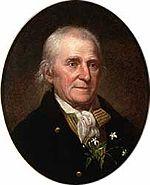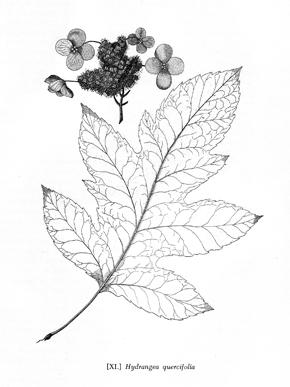2. William Bartram Trail
Throughout the late eighteenth century, just before the American Revolution, botanist William Bartram (1739-1823) explored the new, uncharted territories of the southeastern United States. This gentle and reclusive Quaker was hired by British physician John Fothergill to collect and sketch plants. Bartram’s drawings and detailed diaries of his adventures were later published (1791). Bartram’s Travels inspired English Romantic nature writings of Wordsworth and Coleridge, and his works were published and read widely in Europe.

Portrait of William Bartram by Charles Willson Peale, 1808.
Bartram’s diary includes a description of his journal from Savannah to the Chattahoochee River, using the Native American trail that would become the Federal Road. In early July, 1774, as Bartram hiked through what would become Marion County, he wrote describing fierce biting flies, delicate oakleaf hydrangeas, and the cooling rain which left his men feeling renewed. He also described staying one night with Creek peoples in eastern Marion County. Bartram was given the name of Puc Puggy (the flower hunter) by the Seminole people. His Travels is now recognized as the first environmental literature published in the United States.

Sketch of the oakleaf hydrangea (Hydrangea quercifolia) from Bartram’s Travels (1794).
Submission composed by Erin Wenzel and Amanda Rees, April 16, 2016
References and Further Reading
Bartram, W. 1791/1794. Travels through North and South Carolina, East and West Florida, the Cherokee Country, the Extensive Territories of the Muscolgulers, or Creek Confederacy, and the Country of the Chactaws. Philadelphia: James & Johnson.
